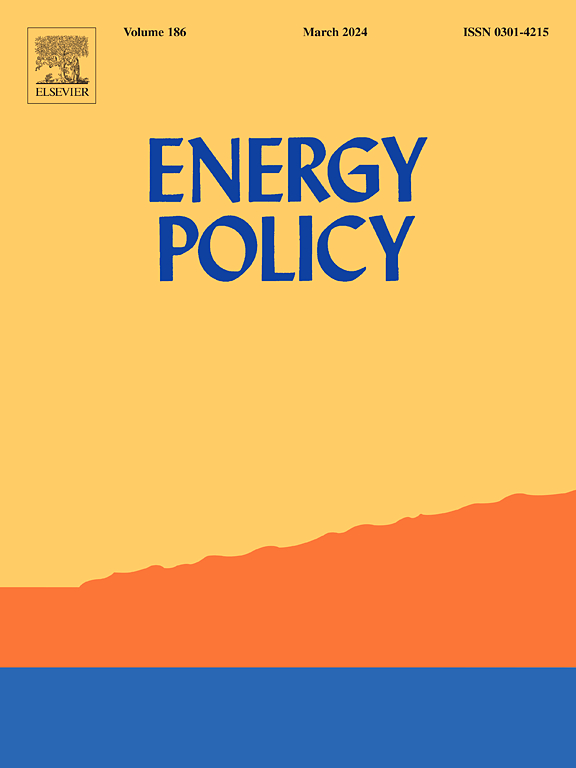只要有光,疟疾就回来了:撒哈拉以南农村国家电力与疟疾关系的跨国分析
IF 9.2
2区 经济学
Q1 ECONOMICS
引用次数: 0
摘要
疟疾在许多撒哈拉以南非洲国家仍然是一个重大的公共卫生挑战,每年有超过2.47亿人检测呈阳性,约60万人死亡。其负担对弱势群体的影响尤为严重,对他们的健康、劳动生产率和生活水平造成影响。虽然各种因素导致疟疾的发生,但电力的获取和使用可能发挥的作用受到的关注有限。撒哈拉以南非洲农村地区通电带来的发展效益是毋庸置疑的,那里70%的人口没有接入电网。另一方面,电力可能是疟疾病例激增的一个渠道;疟疾病媒会被电灯吸引,而晚上有光线可能会助长人们接触疟疾病媒的习惯。本文调查了10个撒哈拉以南国家农村地区0至5岁儿童获得电力与疟疾发病率之间的关系;该数据集汇集了2015年至2021年间收集的人口与健康调查的15项家庭调查,收集了约5万个家庭的数据,并依赖于对儿童进行的87500次疟疾检测。在控制了一系列变量后,在家庭和个人水平上进行的计量经济学结果表明,电力和疟疾流行率之间的关系是积极和显著的,并且对模型规范具有鲁棒性。根据模块规格的不同,电力的使用可能使疟疾的发病率增加15%至42%,而这种联系在农村下层人口中更为强烈。本文章由计算机程序翻译,如有差异,请以英文原文为准。
Let there be light, and lol and behold malaria returned: a cross country analysis of the electricity-malaria nexus in rural sub-Saharan countries
Malaria remains a significant public health challenge in many sub-Saharan African countries, with more than 247 million people tested positive and about 600 thousand deaths every year. Its burden disproportionately affects vulnerable populations, with consequences for their health, labour productivity, and standards of living.
While various factors contribute to the occurrence of malaria, the role that the access and the use of electricity may play has received limited attention. The development related benefits of electrifying rural areas of sub-Saharan Africa -where 70 % of the total population is not connected to the grid-are undoubtful. Electricity, on the other hand, may represent a channel for a surge of malaria cases; malaria vectors are attracted by electric lights and the availability of light in the evening may encourage habits that increase people exposure to malaria vectors.
This paper investigates the nexus between access to electricity and malaria incidence in children aged between 0 and 5 living in the rural areas of 10 Sub-Saharan countries; the dataset -which aggregates 15 household-level surveys from the Demographic and Health Survey collected between 2015 and 2021- gathers data on about 50,000 households and relies on 87,500 malaria tests on children.
Controlling for a range of variables, the econometric results done at the household and at the individual level suggests that the relationship between electricity and malaria prevalence is positive and significant -and robust to model specification. Depending on the module specification, the use of electricity may increase the occurrence of malaria of between 15 and 42 %, with the nexus being stronger for the lower strata of the rural population.
求助全文
通过发布文献求助,成功后即可免费获取论文全文。
去求助
来源期刊

Energy Policy
管理科学-环境科学
CiteScore
17.30
自引率
5.60%
发文量
540
审稿时长
7.9 months
期刊介绍:
Energy policy is the manner in which a given entity (often governmental) has decided to address issues of energy development including energy conversion, distribution and use as well as reduction of greenhouse gas emissions in order to contribute to climate change mitigation. The attributes of energy policy may include legislation, international treaties, incentives to investment, guidelines for energy conservation, taxation and other public policy techniques.
Energy policy is closely related to climate change policy because totalled worldwide the energy sector emits more greenhouse gas than other sectors.
 求助内容:
求助内容: 应助结果提醒方式:
应助结果提醒方式:


